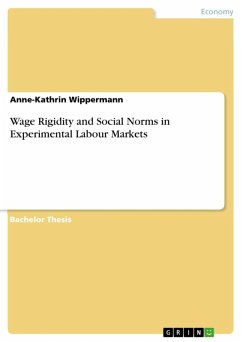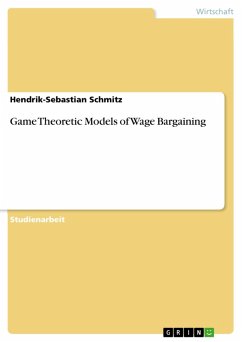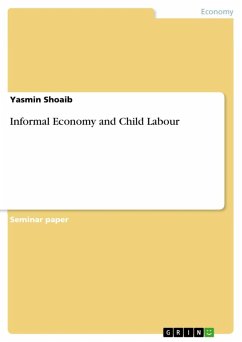Bachelor Thesis from the year 2006 in the subject Economics - Job market economics, grade: 1,0, University of Göttingen, language: English, abstract: Are wages rigid, and if so, why? The question raised has attracted economists' attention ever since Keynes (1936, p. 289) suggested that wages were rigid and could lead to involuntary unemployment (Gächter, 2001, p. 478). This wage rigidity can be defined as the tendency of wages to react slowly, if at all, to excess labour supply and/or demand (Wachtel, 1994, p. 482). Keynes' theory is at odds with the neoclassical model of the labour market, in which wages are flexible and therefore full employment at a market-clearing wage will ultimately be reached (Fischer and Heier, 1983, p. 56). Due to the clash between Keynes' theory and the neoclassical model, a lively discussion among economists arose as to whether wage rigidity existed or not. Some economists, such as Lucas and Rapping (1969, p. 748), claimed that wage rigidity was an illusion and that existing unemployment was voluntary, i.e. real wages were below workers' reservation wages. Others claimed that wages were rigid and started to implant sociological findings into economic models, which gave further explanations as to why wage rigidity existed. As a consequence of this debate it became clear that evidence was needed as to which of the models and theories actually applied to real world labour markets. Some economists went about this by conducting surveys in the labour market (see, e.g., Bewley, 1999, and Campbell III. and Kamlani, 1997). Others used experimental methods to simulate labour markets and test theories of wage rigidity for their robustness. Their findings, which generally confirm the sociological approaches to wage rigidity, will be the basis of this paper.
Dieser Download kann aus rechtlichen Gründen nur mit Rechnungsadresse in A, B, BG, CY, CZ, D, DK, EW, E, FIN, F, GR, HR, H, IRL, I, LT, L, LR, M, NL, PL, P, R, S, SLO, SK ausgeliefert werden.









